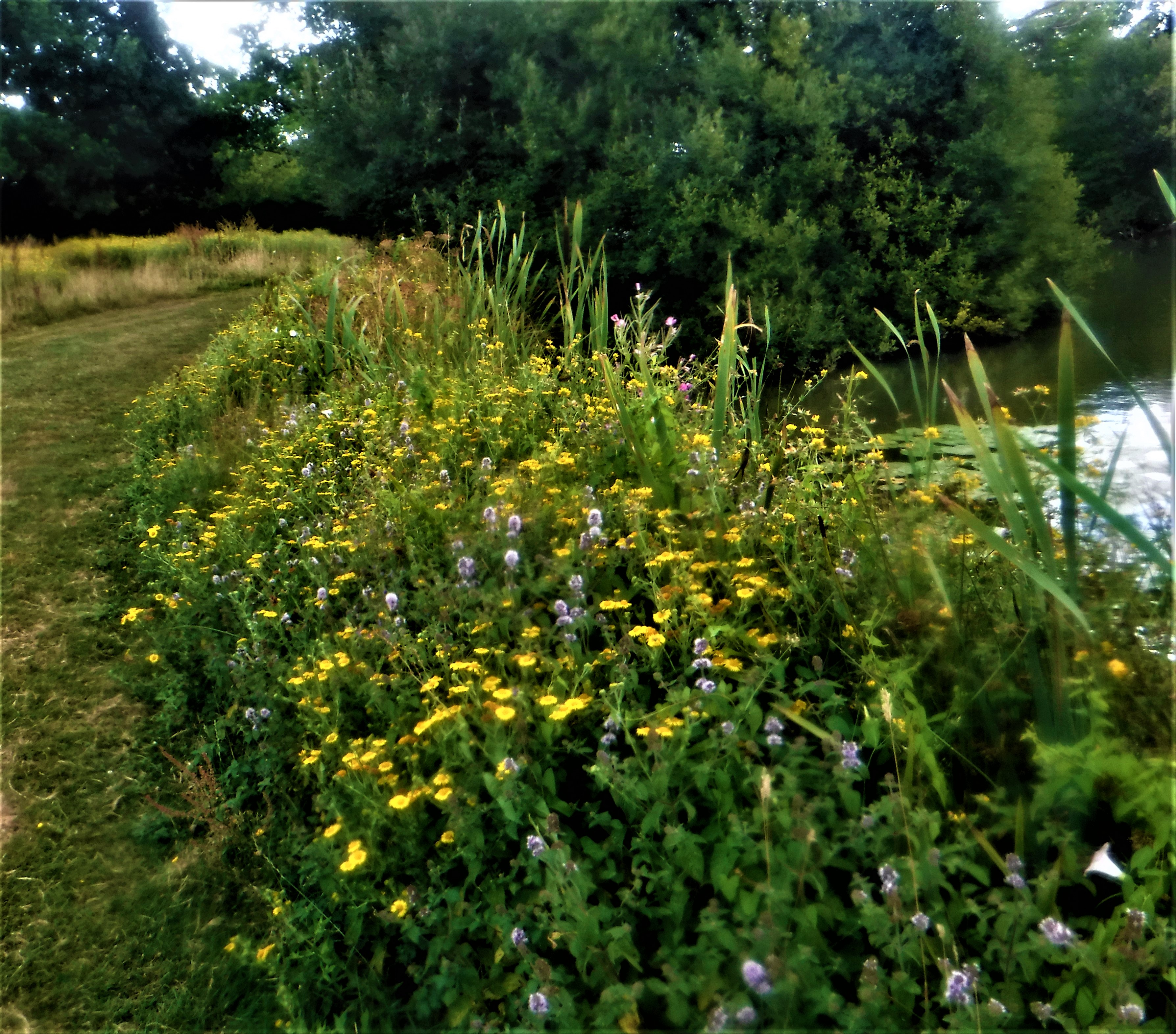
Total monthly rainfall: 0.5 millimetres. Maximum daily rainfall 0.5 millimetres on 26th July. There was one day when measurable rain fell, and 9 days when cloud-cover was 100% for at least part of the day.
Maximum temperature on the warmest day was 38C on July 19th, and on the coldest day was 16C on July 1st. The strongest wind was July 1st, when it reached force 5.
There were 5 new wildflower species to add to the 53 already seen. On July 2nd woody nightshade was discovered growing in a drainage ditch, while on the 9th knapweed began flowering in large numbers. On July 12th water mint started flowering around the lake, and in the woodland foxgloves bloomed on July 16th. Finally teasel bloomed in the ride on July 30th.
Last month we recorded our 18th species of butterfly. On July 2nd we discovered 5 marbled white butterflies in the front eastern meadow. July 4th produced our first gatekeeper of the year, while the first painted lady showed up on water mint lakeside on July 23rd.This brings our running total to 21 species.
-
 First knapweed
First knapweed
First knapweed
First knapweed
-
 Gatekeeper butterfly
Gatekeeper butterfly
Gatekeeper butterfly
Gatekeeper butterfly
-
 Teasel
Teasel
Teasel
Teasel
-
 Water mint and fleabane
Water mint and fleabane
Water mint and fleabane
Water mint and fleabane
https://www.kentfieldclub.org.uk/news/little-barton-farm-wildlife-notes/nature-notes-july-2022#sigProIdaae853e776
We also began this month with 18 moth-related species but can only add one new moth species this time. It is a shaded broad-bar moth among a wildflower pasture on July 26th,
Six new species of dragonfly were recorded this month, taking our running total to 16. A banded demoiselle visited our lake from the River Beult on the morning of July 2nd, before our first common darter appeared in the woodland ride on the 3rd. On the 6th a brown hawker appeared, while on the 20th three migrant hawkers flew alongside the woodland edge. On July 22nd, a willow emerald and 2 exuviae appeared on reed-mace at the back woodland pond. Finally, a ruddy darter with its exuvia was found at the same woodland pond on the 23rd.
Two further sightings, disconnected from the above insect species appeared during the month. They were a glow worm on our back lawn on July 9th, and a green shield bug inside our front door on the 23rd. Realising that butterflies, moths and bees loved thistles, we allowed them to bloom until fleabane and knapweed caught up. It then became a ruthless daily task of removing the seed-heads between 10 am and mid-day to prevent continuous re-seeding. Furthermore, it became obvious that cracks in the clay 25 centimetres deep and 8 centimetres wide have appeared in our clay soil because the weather is so dry.


